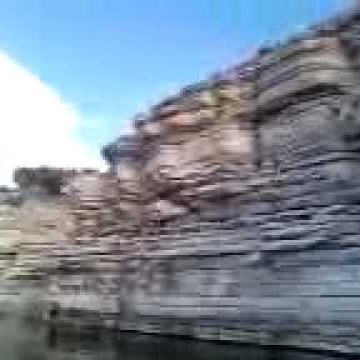Billy J Dotson
age ~87
from Frisco, TX
- Also known as:
-
- Billy Joe Dotson
- Billy Doris Dotson
- Bill J Dotson
- William J Dotson
Billy Dotson Phones & Addresses
- Frisco, TX
- Alpharetta, GA
- Winston Salem, NC
- Vint Hill Farms, VA
Work
-
Company:Amstead railFeb 2011
-
Position:Welder
Education
-
School / High School:Ranken Technical College2011
-
Specialities:Certificate in Industrial Technology
Skills
Graduated suma cum laude in pipe-welding • stick-welding • mig... etc
Resumes

Billy Dotson
view source
Billy Dotson
view source
Billy Dotson
view sourceLocation:
United States

Billy Dotson St. Louis, MO
view sourceWork:
Amstead Rail
Feb 2011 to 2000
WELDER Bechtel Construction
Jun 2010 to Sep 2010
Millwright Bi-State Roofing
Dec 2009 to Apr 2010
Carpenter M.J.S Installers
Aug 2007 to Oct 2009 J.P. Henry Contracting
Jul 2005 to Apr 2007 Manpower Temp
Jan 2002 to Jun 2005
Manpower Temp Vi-Jon Labs
Jul 1997 to Sep 2001
Feb 2011 to 2000
WELDER Bechtel Construction
Jun 2010 to Sep 2010
Millwright Bi-State Roofing
Dec 2009 to Apr 2010
Carpenter M.J.S Installers
Aug 2007 to Oct 2009 J.P. Henry Contracting
Jul 2005 to Apr 2007 Manpower Temp
Jan 2002 to Jun 2005
Manpower Temp Vi-Jon Labs
Jul 1997 to Sep 2001
Education:
Ranken Technical College
2011
Certificate in Industrial Technology
2011
Certificate in Industrial Technology
Skills:
Graduated suma cum laude in pipe-welding,stick-welding,mig... etc
Name / Title
Company / Classification
Phones & Addresses
Principal
Clecio Antonio Ferreira De Aza
Business Services at Non-Commercial Site
Business Services at Non-Commercial Site
1476 Shadowbrook Dr, Marietta, GA 30062
Us Patents
-
Method Of Improved Oil Recovery By Simultaneous Injection Of Water With An In-Situ Combustion Process
view source -
US Patent:44933690, Jan 15, 1985
-
Filed:Mar 24, 1983
-
Appl. No.:6/478596
-
Inventors:Aziz S. Odeh - Dallas TX
Billy J. Dotson - Grand Prairie TX -
Assignee:Mobil Oil Corporation - New York NY
-
International Classification:E21B 43243
-
US Classification:166261
-
Abstract:A method of recovering heavy oil from a subterranean, permeable, heavy oil-bearing reservoir in which an oxygen-containing gas is injected into the lower portion of the reservoir to establish an in-situ combustion reaction therein and to form a combustion front near the injection well. Injection of the oxygen-containing gas is continued to advance the combustion front that heats the oil and generates gas to displace the oil through the reservoir toward a producing well. Water is injected into the upper portion of the reservoir during combustion to prevent gases from migrating into the upper portion of the reservoir, scavenge heat from the burned out portion of the reservoir, and displace oil from the reservoir, particularly the lower region, toward a production well. The areal sweep efficiency of the injected water may be improved by the addition of thickening agents and water-soluble polymers.
-
Method For Determining Consistent Water Relative Permeability Values From Dynamic Displacement Data
view source -
US Patent:46226435, Nov 11, 1986
-
Filed:Oct 21, 1983
-
Appl. No.:6/544176
-
Inventors:Billy J. Dotson - Grand Prairie TX
-
Assignee:Mobil Oil Corporation - New York NY
-
International Classification:G01N 1508
-
US Classification:364556
-
Abstract:Corrected water relative permeability values for a core sample are determined from dynamic displacement measurements by the steps of plotting a ratio of water rate output (q. sub. w) to calculated water relative permeability values (k. sub. rw) vs. average water saturation (S. sub. w), determining if a straight line segment exists in areas of the plot corresponding to high average oil saturations, and if it does, extrapolating the straight line segment to the end of the plotted data, otherwise plotting a tangent to the plotted ratio from a beginning point of the plot, producing a line in parallel with the extrapolated straight line segment or the tangent line but shifted so as to pass through the irreducible water saturation point S. sub. iw, and correcting the calculated water relative permeability values k. sub. rw by multiplying the calculated values k. sub.
-
In-Situ Uranium Leaching
view source -
US Patent:44272367, Jan 24, 1984
-
Filed:Aug 18, 1981
-
Appl. No.:6/293785
-
Inventors:Billy J. Dotson - Grand Prairie TX
-
Assignee:Mobil Oil Corporation - New York NY
-
International Classification:E21B 4328
E21C 4114 -
US Classification:299 5
-
Abstract:The present invention relates to a method for improving the recovery of mineral values from ore bodies subjected to in-situ leaching by controlling the flow behavior of the leaching solution. Foam is introduced into the higher permeability zones of the ore body to act as a diverting agent forcing the leaching fluids into the lower permeability previously non-contacted areas resulting in increased mineral values recovery.
-
Method For Removing Ammonium Ions From A Subterranean Formation
view source -
US Patent:44744080, Oct 2, 1984
-
Filed:Aug 11, 1982
-
Appl. No.:6/407202
-
Inventors:Billy J. Dotson - Grand Prairie TX
-
Assignee:Mobil Oil Corporation - New York NY
-
International Classification:E21B 4328
E21B 4700 -
US Classification:299 4
-
Abstract:The ammonium ions in a subterranean clay-containing formation may be removed by flushing the formation with a calcium ion containing restoration fluid having substantially the highest pH effective to prevent precipitation of calcium hydroxide from said restoration fluid. The calcium ion concentration in the restoration fluid is maintained between about 10,000 and 100,000 ppm until the ammonia concentration in the produced fluid peaks or is less than about 100 ppm. Thereafter the calcium ion concentration is maintained at about 400 to about 600 ppm until the desired level of ammonia is obtained, usually about 1-3 ppm.
-
Method Of Improved Oil Recovery By Simultaneous Injection Of Steam And Water
view source -
US Patent:43925308, Jul 12, 1983
-
Filed:Apr 30, 1981
-
Appl. No.:6/259329
-
Inventors:Aziz S. Odeh - Dallas TX
Billy J. Dotson - Grand Prairie TX -
Assignee:Mobil Oil Corporation - New York NY
-
International Classification:E21B 4324
-
US Classification:166269
-
Abstract:A method for recovering heavy oil from a subterranean, permeable, heavy oil-containing formation comprising injecting steam into the lower portion of the formation, injecting a controlled amount of unheated water into the upper portion of the formation and displacing the oil through the formation toward a production well where the oil is produced. The steam injection releases heat (BTU) to the heavy oil and formation reducing the viscosity of the oil and increasing its mobility for recovery. The sequence of injection of the water and steam is designed to yield the maximum oil recovery per BTU injected by increasing the volume of the formation subjected to heating and increasing the vertical sweep.
Googleplus

Billy Dotson
Education:
WMHS

Billy Dotson

Billy Dotson
view source
Billy Dotson
view source
Billy Dotson
view source
Billy Dotson
view source
Billy Dotson
view source
Billy Dotson
view source
Billy Dotson
view source
Billy Dotson
view sourceClassmates

Billy Dotson
view sourceSchools:
Whiteoak High School Mowrystown OH 1991-1995
Community:
Wilbert Bill, Amy Jones

Billy Dotson
view sourceSchools:
Sullivan West High School Kingsport TN 1950-1954
Community:
Terri Cox, Margaret Byerley

Billy Dotson
view sourceSchools:
Milford Junior High School Milford OH 1975-1977
Community:
Cristi Sitzman, Ruth Schmitt

Billy Dotson
view sourceSchools:
Ozark High School Ozark AR 2004-2008
Community:
Lisa Medlock, Stephen Simpson, Jeff Maynard

Billy Dotson
view sourceSchools:
Richard Lagow Elementary School Dallas TX 1965-1970, Rylie Middle School Dallas TX 1970-1971
Community:
Sherry Vega, Dawn Houston, Kathy Waits, Tina Taylor, David Adams

Billy Dotson
view sourceSchools:
Central Elementary School Carrollton TX 1974-1981, DeWitt Perry Middle School Carrollton TX 1981-1983, Hawkins High School Hawkins TX 1983-1987
Community:
Clint Williams, Jesse Esparza, Rhonda Eitson, Val Vickers, William Smith, Christy Gidney, Julie Phillips, Todd Dunn, Stacy Wood

billy dotson, Glenville H...
view source
Billy Dotson, Pikeville C...
view sourceMyspace
Youtube
Get Report for Billy J Dotson from Frisco, TX, age ~87








